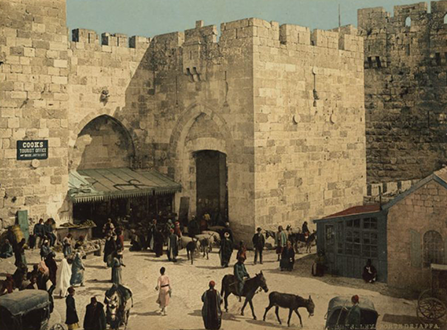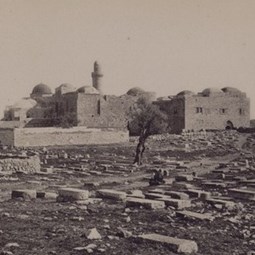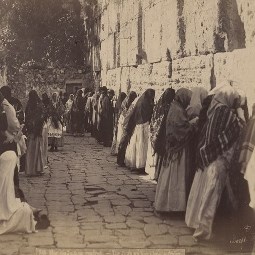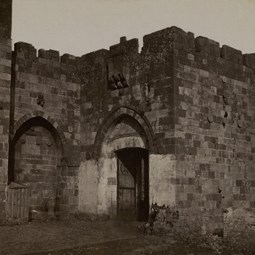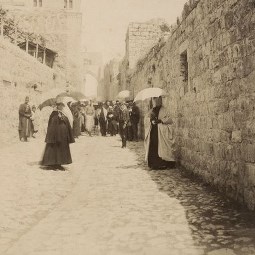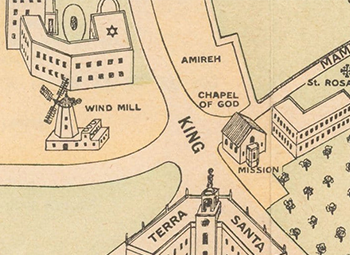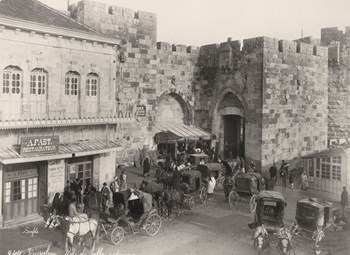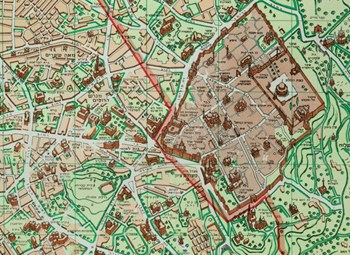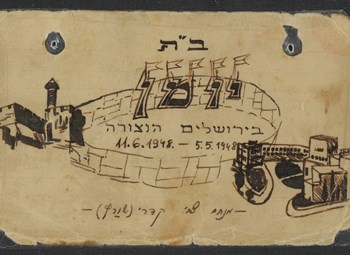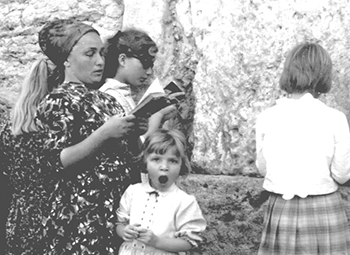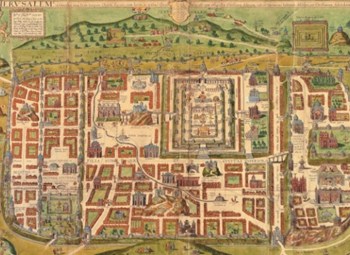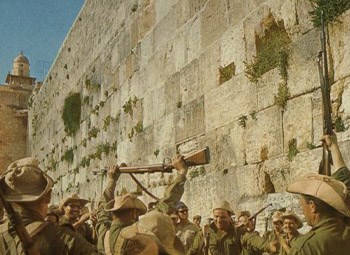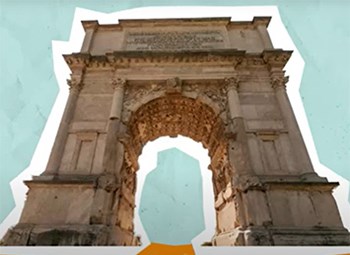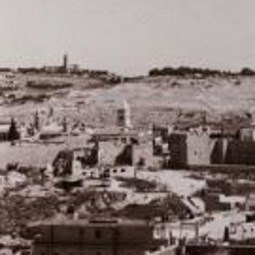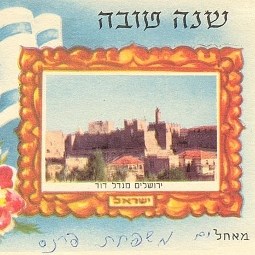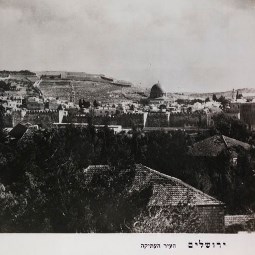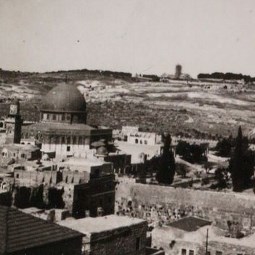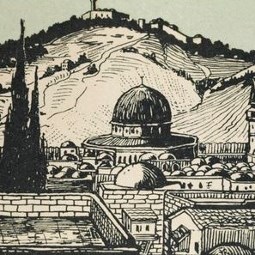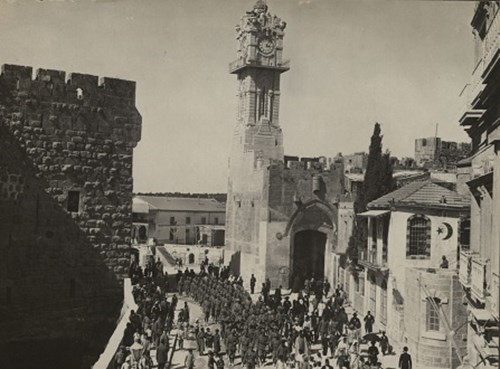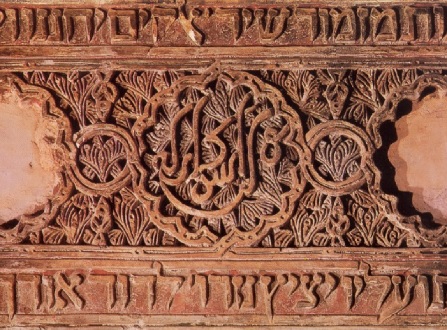More on Jerusalem
The History of Jerusalem
The city of Jerusalem was founded by the Jebusites in the 19th century BCE. Its sacred status led to it becoming a focus point of conflict and war over the centuries. The countless upheavals the city endured contributed to its rich and fascinating history.
King David established the first Jewish settlement in Jerusalem in the first millennium BCE after conquering the Jebusite city, and his son Solomon reinforced it with the building of the First Temple. Since then Jerusalem has changed hands many times. First, the Babylonians conquered the kingdom of Judea and razed the Temple. After the rise of the Persian Empire, Jerusalem once again became a center of Jewish life, with the building of the Second Temple. Next, Alexander the Great brought Hellenism to the city before the Hasmoneans restored Jewish rule. During the rule of the Roman Empire, the Second Temple was destroyed. In the Byzantine period, the city became a Christian center. This was followed by Muslim rule, which lasted until the arrival of the Christian Crusaders. Their reign terminated with the city’s capture by Saladin, who returned the city once more to Muslim rule.
The regime changes did not end there and included another period of Crusader control, followed by the Mamluks, the Ottomans and the British. From 1948, Jerusalem was divided between Israel and Jordan. It remained divided until 1967, when the IDF conquered the eastern half of the city.
The Old City
The Old City of Jerusalem is the most visited location in Israel. Because of its importance to Judaism, Islam and Christianity and the monumental historical sites concentrated within it, UNESCO declared it a World Heritage Site. The Old City measures one square kilometer and is home to about 40,000 residents. Photographs and paintings of Old Jerusalem from different periods, including rare and poignant images capturing daily life inside its walls continue to arouse great interest around the world. In recent years, many new images have been discovered, with efforts being made to make these accessible to the public.
Books about Jerusalem
Not many cities in the world can compete with Jerusalem in the amount and types of writing it has inspired. There are countless books about the city’s history, culture, geography, architecture and economy. Travel diaries, guidebooks as well as books of poetry and photographic albums reveal the city’s unique charms and atmosphere. Every book opens a window onto one of the many aspects that make up its complex mosaic.
Jerusalem at the National Library of Israel
The National Library contains manuscripts devoted to Jerusalem and its sanctity in over 70 languages, including wonderful descriptions written by pilgrims and tourists who have visited it throughout the ages; thousands of books dealing with Jerusalem as both a tangible as well as an imagined and utopian city, a geographical place as well as an abstract concept; and spectacular images of the Old City of Jerusalem. In addition, the Library possesses the world’s largest collection of maps delineating the city’s geography. This collection ranges from Middle Age atlases and maps to the latest satellite photographs. Readers can also explore the history of Jerusalem through its vast collection of pictures, posters and books about the city.
As early as the end of the 19th century, the staff of the National Library began collecting photographs of the Land of Israel, including the city of Jerusalem. The Library’s collection of photographs of Jerusalem includes thousands of items, including rare 19th-century photographs taken by early pioneers in the field. The Library also holds rare as well as a number of unique copies of the first newspapers and books printed in Jerusalem. The Library continues to collect everything printed in the country and its capital.
The collections of the National Library contain hundreds of thousands of items dealing with Jerusalem from a variety of angles. Some of the items are accessible on any digital screen and other items are only available for viewing at the Library. In addition, you will find over 140,000 books about Jerusalem; direct access to over 30,000 historical photos of the city; over 1,000 beautiful historical maps of the city; as well as an enormous variety of manuscripts, historical recordings, research papers and journals.
The Library’s curators have chosen a variety of examples to give readers a sense of its vast collections. The items selected here show rare, exciting, and poignant aspects of the city’s many faces, in the hope that every visitor will find a story of particular interest to them.

 Sign in with Google
Sign in with Google
 Sign in with Facebook
Sign in with Facebook
